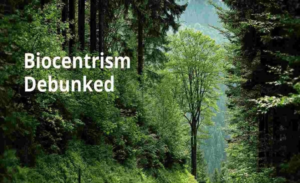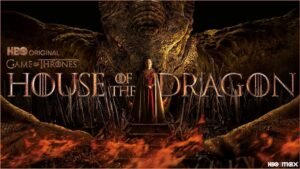
Pulsamento
Introduction
When it comes to track, rhythm is the pulse that maintains everything flowing. One key element that brings the track to life is pulsamento—a term used to explain rhythmic patterns that create a feel of pulse or heartbeat within the song. This idea is critical because it drives the strength, mood, and structure of a bit. Think of it because the rhythm that makes you faucet your foot, nod your head, or arise and dance. It’s the heartbeat that keeps us engaged and connected to the song.
Historical Context
The concept of pulsamento has deep roots within the records of track. Traditional tunes from various cultures have usually depended on rhythmic styles to create a feel of network and shared revel in. Whether it’s African drumming, Latin beats, or the classical systems of Western tracks, rhythmic styles were an essential part of musical expression. These patterns have advanced over time, stimulated by cultural exchanges, migrations, and technological improvements.
Role in Different Genres
Pulsamento performs a critical role in numerous track genres, shaping the way we revel in them:
- Classical Music:
In classical compositions, pulsamento is regularly diffused but vital in keeping shape and shape. Composers like Bach and Mozart used rhythmic styles to create complex layers of sound.
- Jazz:
Jazz is all approximately rhythm and improvisation, and pulsamento gives musicians the freedom to discover distinct tempos and syncopations. It’s the driving force at the back of the energy and spontaneity of jazz performances.
- Rock and Pop:
In these genres, pulsamento is greater pronounced, with heavy use of percussion and strong beats. It’s the engine that powers the high-power performances and catchy hooks.
- World Music:
Many conventional and folk music styles around the arena depend on pulsamento to create an experience of cultural identity. From the tabla in Indian music to the djembe in African rhythms, it is a unifying force.
Characteristics
Pulsamento is more than just an everyday beat; it includes consistency and version in rhythmic styles. It’s about developing a sense of motion and flow while permitting room for dynamics and emotion. In a few instances, it is easy, to provide a regular pulse at some point in a piece. In different instances, it consists of versions that keep the listener engaged and intrigued.
Techniques for Creation
Musicians use numerous techniques to create it in their compositions. Some common approaches consist of:
- Repeated Rhythmic Motifs:
Repeating unique rhythmic styles creates an experience of familiarity and structure.
- Use of Percussion Instruments:
Drums, cymbals, and different percussion devices play an essential function in setting up pulsamento.
- Syncopation:
This technique involves accenting off-beats or unexpected rhythms, including complexity to it.
Musical Structure
Pulsamento is closely tied to musical structure. It regularly dictates the time signatures used in a composition, influencing the general experience of the track. For example, a four/four-time signature creates a steady, predictable rhythm, whilst a three/4 or 6/eight time signature can introduce a waltz-like feel. The rhythmic structure of a piece can also impact its association, figuring out whilst certain units are available and how the song builds and releases anxiety.
Examples in Famous Works
It is found in many well-known pieces across exclusive genres:
Classical Compositions:
Beethoven’s Symphony No. Five has a distinctive rhythmic pattern that offers the piece its iconic power. Similarly, Tchaikovsky’s “1812 Overture” uses it to create dramatic moments.
Rock and Pop Songs:
Songs like “We Will Rock You” by Queen and “Billie Jean” by Michael Jackson have powerful pulsamento that makes them right away. The rhythmic patterns in those songs are what cause them to be so memorable.
How Musicians Use it to Engage Audiences
Pulsamento is an effective tool for attracting audiences. Musicians use it to create power and movement, drawing listeners into the song. By building tension and then releasing it, they are able to create moments of pleasure and anticipation. In stay performances, it plays a key position in getting the gang on their toes and growing a sense of connection between the performers and the audience.
The Evolution in Contemporary Music
In recent years, it has advanced with the advent of digital generation. Electronic music, for example, is predicated closely on rhythmic styles and pulsamento to create hypnotic beats and immersive soundscapes. The use of drum machines and digital sequencing permits unique control over rhythmic patterns, leading to new and revolutionary tactics to pulsamento.
Challenges in Creating Effective Pulsamento
While pulsamento is an effective device, it is able to additionally gift demanding situations for musicians and composers. The danger of monotony is always present, specifically while repetitive patterns are used without version. Balancing rhythm with melody and concord is essential to creating the enticing track. Finding the proper stability among consistency and variation may be a sensitive artwork.
Role in Live Performances
In live performances, pulsamento could make or smash the display. It determines the strength stage and the interaction among the performers and the target audience. Techniques like crowd participation, name-and-reaction, and dynamic-level setups are used to enhance the impact of it. Musicians often use stay performances to test with new rhythmic versions, including an element of spontaneity and excitement.
How to Develop Your Own Pulsamento Style
For musicians and composers seeking to broaden their very own style, experimentation is fundamental. Try one-of-a-kind rhythmic styles, test with syncopation, and explore various percussion units. Understanding the connection between rhythm and melody can assist create a completely unique and compelling pulsamento style. Don’t be afraid to push boundaries and discover new territory.
Influence on Melody and Harmony
Pulsamento doesn’t just have an effect on rhythm; it has a profound effect on melody and harmony as well. When composers combine it into their works, they’re essentially creating a framework for the melodies and harmonies to flourish. Think of it like the skeleton of a construction: it’s the underlying shape that supports the whole lot else. In jazz, as an example, the pulsamento can manual the melodic improvisation, allowing musicians to discover exceptional topics whilst staying grounded in the rhythm. Similarly, in classical songs, it can provide the context for harmonic development, indicating which chord adjustments have to occur and how they ought to interact with the rhythm.
Using it to Tell a Story
Musicians frequently use pulsamento to inform a tale via their tune. By varying the rhythmic styles and adding dynamics, they can evoke exclusive feelings and manual the listener on an adventure. For example, a bit with a slow, consistent pulsamento would possibly bring a feel of calm and mirrored image, at the same time as a quick, syncopated rhythm may want to advise pleasure or urgency. This storytelling component of pulsamento is specifically obtrusive in genres like film scoring, wherein composers use rhythmic styles to enhance the narrative and create anxiety or resolve.
Cross-Cultural Music Collaborations
One of the most interesting aspects of pulsamento is its ability to bridge cultural divides. As musicians from distinct backgrounds collaborate, they frequently bring their precise rhythmic traditions into the mixture. This go-cultural trade can lead to modern and particular patterns that resonate with a broader target market. Consider the fusion of Latin rhythms with jazz or rock elements, creating colorful and dynamic song that displays a blend of cultures. In those collaborations, pulsamento serves as a not-unusual language that unites musicians and listeners alike.
Role in Dance and Movement
Pulsamento is a riding pressure in dance and movement. Whether it is ballet, modern-day dance, or hip-hop, the rhythmic styles provide the shape for choreographers to create fascinating performances. In many cases, it dictates the pace and energy degree of the dance, guiding the movements and transitions. Dancers rely upon it to live in sync with the track, developing a continuing connection between sound and motion. This symbiotic dating between pulsamento and dance is what makes stay performances so fascinating.
The Impact of Technology
Technology has had a massive effect on how it is created and experienced. With digital tune production tools, musicians have more flexibility to test with rhythmic patterns and pulsamento versions. Drum machines, sequencers, and virtual audio workstations permit specific management over timing and rhythm, starting up new possibilities for growing it. Additionally, generation has enabled musicians to collaborate throughout distances, leading to an extra diverse range of rhythmic effects. As a end result, the pulsamento in present-day songs is more varied and dynamic than ever earlier.
Educational Settings
It is not only for expert musicians; it’s also a crucial concept in song education. Teachers use rhythmic patterns to help college students understand musical concepts and expand their talents. By incorporating pulsamento into music classes, educators could make studying extra engaging and interactive. Students can test with specific rhythms, learn to play in time and expand their feel of musical shape. Additionally, it can foster a sense of teamwork and collaboration, as college students work together to create harmonious rhythmic styles.
Rediscovering in Modern Music
While cutting-edge technology has driven pulsamento into new and thrilling territories, there is additionally a resurgence of traditional rhythmic styles in contemporary track. Artists are rediscovering the beauty and simplicity of conventional rhythms, integrating them into present-day compositions. This blending of antique and new creates a completely unique sound that resonates with listeners who respect each tradition and innovation. Whether it’s a rock band the usage of tribal drum patterns or a classical composer exploring ancient rhythms, this trend demonstrates the timeless attraction of it.
The Future in Music
The future of pulsamento is vivid, with new technologies and tendencies driving its evolution. Digital tune manufacturing equipment permits greater flexibility and creativity in developing rhythmic styles. Additionally, the combination of artificial intelligence and system getting to know ought to result in new and unexpected procedures to it. As the track keeps evolving, pulsamento will continue to be a relevant element in shaping its route.
Conclusion
Pulsamento is the pulse of tune, offering the rhythmic styles that give it strength and life. Whether it is classical compositions, jazz improvisations, or current pop hits, pulsamento plays a critical position in engaging audiences and creating memorable musical studies. As generation and musical tendencies continue to conform, the opportunities for it are infinite.
FAQs
Q1: What is the beginning of the term “pulsamento”?
The term “pulsamento” comes from the Latin word “pulsare,” meaning “to overcome” or “to pulse.” It refers to rhythmic patterns that create an experience of pulse or heartbeat within the track.
Q2: How is pulsamento unique from an everyday beat?
Pulsamento is going past a simple beat by means of incorporating versions, syncopations, and complicated rhythmic patterns. It’s approximately creating a sense of flow and movement, as opposed to just a steady rhythm.
Q3: Can pulsamento exist without percussion instruments?
Yes, pulsamento may be created without percussion instruments. It may be done via rhythmic styles in other units, such as guitar strumming or piano chords.
Q4: How does pulsamento contribute to the emotional impact of a tune?
Pulsamento units the tone and energy of a tune, influencing how listeners experience it. It can create pleasure, anxiety, or calmness, depending on the rhythmic styles used.
Q5: What are some famous examples of pulsamento in music?
Famous examples of pulsamento include “We Will Rock You” by using Queen, with its iconic stomp-stomp-clap rhythm, and Beethoven’s Symphony No. 5, with its driving rhythmic motif.





